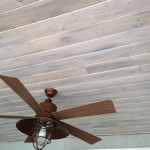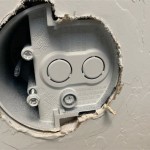What Can Be Done With Old Drop Ceiling Tiles
Drop ceiling tiles, also known as suspended ceiling tiles, are a common feature in many commercial buildings, offices, and even some residential spaces. Over time, these tiles can become stained, damaged, or simply outdated. Rather than simply discarding them, there are various options for repurposing or properly disposing of old drop ceiling tiles. This article explores several potential avenues for handling these materials, focusing on reuse, creative projects, and responsible disposal methods.
The composition of drop ceiling tiles significantly impacts the options for their disposal or reuse. Older tiles may contain asbestos, particularly those installed before the 1980s. Asbestos-containing materials pose a serious health risk when disturbed, as the fibers can become airborne and inhaled. Newer tiles are typically made from mineral fibers, fiberglass, or other composite materials. Identifying the composition of the tiles is essential before undertaking any removal, handling, or disposal activities. Consulting with a qualified professional for asbestos testing is highly recommended if the age and composition of the tiles are uncertain.
Repurposing and Creative Projects
When the tiles are confirmed to be asbestos-free and in relatively good condition, several creative repurposing options present themselves. These projects offer a sustainable approach to handling old materials, diverting them from landfills and giving them a second life.
One popular option is to use the tiles as soundproofing material. Drop ceiling tiles are inherently designed to absorb sound, making them suitable for reducing noise in various environments. They can be incorporated into home theaters, music rooms, or workshops to improve acoustics. The tiles can be attached to walls or ceilings using construction adhesive or mechanical fasteners. Depending on the desired aesthetic, they can be left as is, painted, or covered with fabric.
Another creative application is using the tiles for arts and crafts projects. The flat, rigid surface of the tiles provides a good base for painting, drawing, or creating collages. They can be transformed into decorative wall art, bulletin boards, or even small furniture pieces. The tiles can also be cut into smaller shapes and used as stencils or molds for other craft projects. The versatility of the material makes it suitable for a wide range of artistic endeavors.
Furthermore, drop ceiling tiles can be repurposed as packaging material. Their cushioning properties make them suitable for protecting fragile items during shipping or storage. The tiles can be cut to size and used to wrap delicate objects, fill empty spaces in boxes, or create dividers to prevent items from shifting. This approach is particularly useful for businesses that frequently ship products and are looking for cost-effective and sustainable packaging solutions.
In certain agricultural contexts, drop ceiling tiles can be used as a component in raised garden beds or as a weed barrier. When placed at the bottom of a raised bed, the tiles can help to prevent weeds from growing up into the soil. They can also assist in retaining moisture and improving drainage. However, it is crucial to ensure that the tiles do not contain any harmful chemicals that could leach into the soil and affect plant growth. Thoroughly cleaning the tiles before use is recommended, and avoiding the use of tiles in vegetable gardens is generally advisable unless the material composition is fully known and deemed safe.
Responsible Disposal Methods
When repurposing is not feasible, proper disposal of old drop ceiling tiles becomes essential. The disposal method depends largely on the composition of the tiles and local regulations. Asbestos-containing materials require specialized handling and disposal procedures to prevent the release of harmful fibers into the environment.
For asbestos-containing tiles, it is imperative to contact a licensed asbestos abatement contractor. These professionals are trained and equipped to safely remove and dispose of asbestos-containing materials in accordance with federal, state, and local regulations. The contractor will typically encapsulate the tiles to prevent fiber release, transport them in sealed containers, and dispose of them at a designated asbestos landfill. Attempting to remove or dispose of asbestos-containing materials without proper training and equipment is extremely dangerous and illegal in many jurisdictions.
For tiles that do not contain asbestos, disposal options may include recycling or landfill disposal. Some recycling facilities accept mineral fiber or fiberglass tiles, particularly if they are clean and unpainted. Contacting local recycling centers to inquire about their acceptance policies is recommended. Recycling helps to conserve resources and reduce the amount of waste sent to landfills.
If recycling is not an option, the tiles will likely need to be disposed of in a landfill. Check with the local waste management authority to determine if there are any specific requirements for disposing of drop ceiling tiles. Some landfills may require the tiles to be wrapped or sealed to prevent dust and debris from becoming airborne during transportation and disposal. Following the local regulations ensures that the tiles are disposed of in an environmentally responsible manner.
Considerations for Handling and Safety
Regardless of the chosen disposal or repurposing method, certain safety precautions should be taken when handling old drop ceiling tiles. These precautions help to minimize the risk of exposure to dust, fibers, or other potential hazards.
Wearing appropriate personal protective equipment (PPE) is essential. This includes a respirator or dust mask to protect against inhaling airborne particles, gloves to protect the skin from irritation, and eye protection to prevent dust and debris from entering the eyes. The specific type of PPE required may vary depending on the condition of the tiles and the nature of the task being performed. Consulting with a safety professional or referring to relevant safety guidelines is recommended.
Proper ventilation is also important. Working in a well-ventilated area helps to reduce the concentration of airborne particles. Opening windows and doors or using fans can improve ventilation. For more extensive projects, consider using a portable air purifier with a HEPA filter to remove dust and allergens from the air.
Minimizing dust generation is another key consideration. Avoid breaking or crushing the tiles, as this can release dust and fibers into the air. When cutting or drilling the tiles, use tools with dust collection attachments to capture the debris. Dampening the tiles slightly before cutting or drilling can also help to reduce dust generation. After handling the tiles, thoroughly clean the work area with a HEPA vacuum cleaner to remove any residual dust or debris.
Whenever handling old building materials, it's also prudent to be aware of potential mold contamination. Drop ceiling tiles, especially those in humid environments, can be susceptible to mold growth. If any visible mold is present, take appropriate precautions to prevent the spread of spores. This may involve using a mold-specific cleaner, wearing a respirator, and sealing off the work area. For significant mold infestations, it's best to consult with a professional mold remediation company.
Furthermore, be mindful of the structural integrity of the ceiling grid. Replacing old tiles can sometimes put stress on the existing grid system, especially if the new tiles are heavier or have different dimensions. Ensure that the grid is properly supported and capable of handling the weight of the new tiles. If necessary, reinforce the grid with additional support wires or braces.

Old Dated Ceiling Tile No Problem Pink Little Notebookpink Notebook

How To Easily Update An Ugly Drop Ceiling

Completely Cover A Drop Ceiling Ceilings Armstrong Residential

Diy How To Update Old Ceiling Tile Pink Little Notebookpink Notebook

Diy How To Update Old Ceiling Tile Pink Little Notebookpink Notebook

Diy How To Update Old Ceiling Tile Pink Little Notebookpink Notebook

Drop Ceiling Makeover Fabric Staples Voila Kari Very Interesting Maybe Worth A Try For The Bedroom When I Redo It

Replacing Drop Ceiling Tiles

Gorgeous Modern Diy Drop Ceiling Tile Makeover Crystel Montengro Home

Gorgeous Modern Diy Drop Ceiling Tile Makeover Crystel Montengro Home
Related Posts








